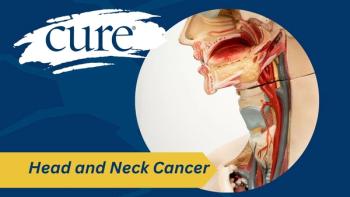
Managing Lymphedema: Education is the Best Treatment
To combat the psychological effects from a lymphedema diagnosis, patients need to be equipped with the knowledge and understanding of what the condition is and how it is treated.
In addition to helping an individual treat their cancer-related lymphedema, physicians must also consider the psychological toll it may also take on a person.
To help patients better understand what lymphedema is, and how it can be treated, Sherry Hite, offered background on the disease and how it can be treated at the 11th Annual Joining FORCEs Against Hereditary Cancer Conference held in San Diego from Oct. 19-20.
“The devastation around lymphedema, I don’t think people really understand. Unfortunately, we have a lot of work to do around our providers about what is the psychological impact of having something like this?” said Hite, an occupational therapy lead in the Department of Rehabilitation Services at City of Hope in Duarte, California.
For example, some comments she has heard from patients regarding their lymphedema diagnosis include:
- “I traded a death sentence for a life sentence.”
- “This is worse than my cancer diagnosis.”
- “I wouldn’t have had treatment if I had known that this is what I would have to live with.”
“What I have witnessed in my practice is that, for (patients), it is this visual sign of, ‘I had cancer.’ We can get rid of the cancer, but you’re left with this deformity, this disfigurement that can be really devastating,” Hite said. “It’s a visual reminder of, ‘I had cancer once, could it come back?’ This increased anxiety of ‘I have to make sure this doesn’t get worse.’”
She noted that lymphedema can have an impact on body image, social participation, an increase in anxiety, wardrobe limitations and the limitation of one’s schedule due to self-management. Therefore, Hite recommends that a comprehensive approach to lymphedema should also address the psychosocial concerns associated with lymphedema.
What Is Lymphedema?
The lymphatic system eliminates waste and fights infections in the body. “These lymph vessels help carry protein-rich lymphatic fluid through the body and basically picks up all of these bacteria, waste and viruses and carries them in to lymph nodes,” Hite explained. “So, within lymph nodes, that is where these things get filtered out with lymphocytes — these immune cells that eventually flush (bacteria, waste and viruses) out of the body.”
However, with lymphedema, the transport capacity of these lymphocytes drops so that it is harder for the lymphatic system to carry the load of bacteria, waste, viruses, resulting in an accumulation of lymphatic fluid.
There are two types of lymphedema: primary, which is not as common and arises from developmental abnormalities of the lymphatic system, and secondary, the type of lymphedema seen in patients with cancer as it arises from trauma to the lymphatic system. Secondary lymphedema can be a result of surgery, radiation, the cancer itself, obesity or infection.
Although lymphedema is predominantly seen in patients with breast cancer — including 20 percent among those who undergo axillary node dissection and 15 percent among individuals who have a sentinel lymph node biopsy followed by radiation — it can also occur in patients with gynecological cancers (20 percent), melanoma (16 percent), genitourinary cancers (13 percent) and head and neck cancer (75 percent).
Signs and symptoms that individuals can be on the lookout for include swelling of parts or all of the arm or leg (including fingers or toes); a feeling of heaviness or tightness; restricted range of motion; aching or discomfort; recurring infections; and hardening and thickening of the skin, also known as fibrosis. Hite noted that pain is not necessarily what an individual should be looking for.
Like cancer, lymphedema is diagnosed in stages, including 0 (swelling is not evident), 1 (early onset accumulation of fluid which can be resolved with elevation of the limb), 2 (pitting of the skin is evident) or 3 (the tissue is fibrotic and the skin changes).
How to Treat Lymphedema
To start, Hite said the best treatment for patients with lymphedema is education. “To me, pulling back all the way to the preoperative setting about what is your real risk of lymphedema? What can you do to reduce that risk?” She questioned. “Education needs to start early on and across disease groups that are impacted by lymphedema.”
The “gold standard” of treatment for lymphedema includes complete decongestive therapy which is a combination of:
- manual lymph node drainage (very light pressure and long, gentle, rhythmic strokes that promote the lymph node to drain out of a limb into an area that drains normally);
- compression bandaging (multi-layered bandages worn 23 hours a day, seven days a week during active treatment); and
- compression garments (used in the second phase when the limb is decongested and volume changes are minimal).
To reduce the risk for lymphedema, Hite recommended for patients to avoid cuts, scratches and insect bites; keep the skin and cuticles moisturized; avoid limb constriction; and avoid extreme temperatures when possible.
“Let’s all make sure we are comprehensive in that level of education,” Hite said. “Let’s equip (the patients) with the knowledge and understanding of how to reduce your risk.”





